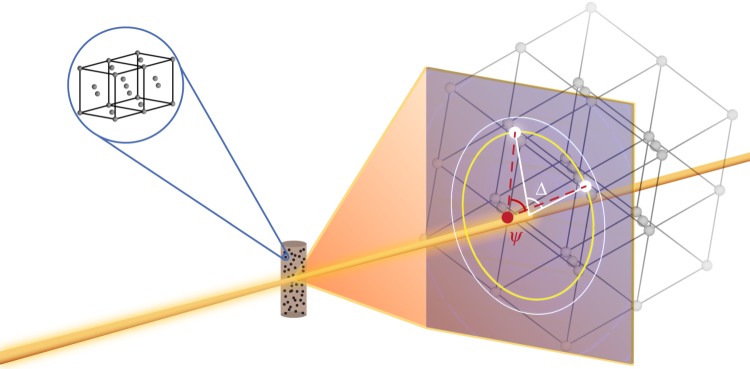Figure 1.

Experimental set-up: a kapton capillary filled with a solution of silver NPs (face-centred-cubic). Bragg rings q111 and q200 are illustrated by circles on the detector plane. At least one of the exposed NPs happens to be oriented such that two reciprocal lattice (body-centred-cubic) peaks are intersecting the detector at q111. Dashed lines represent the scattering vectors (separated by the angle ψ), and solid lines represent the projection of those vectors onto the detector plane (separated by the angle Δ). Artwork courtesy of Gregory M. Stewart (SLAC). (Online version in colour.)
